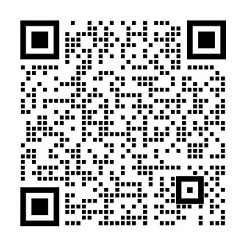The best title for this passage could be.
A.Scared Law
B.Islamic Law
C.Islamic Law, Jewish Law and Canon Law
D.All Kinds of Laws
试卷相关题目
- 1Islamic law never developed an overt trial of strength, because.
A.it was never supported by an organized institute
B.it was dominated by the dualism of religion and state
C.it was reinforced by pressure from outside
D.it was supported by an organized institution
开始考试点击查看答案 - 2The word“ buttress ” (in Line 2,Para 3) means.
A.buttonhole
B.distress
C.support
D.hinder
开始考试点击查看答案 - 3The word “it” (in Line 7, Para 2) most probably refers to.
A.the Old Testament
B.Islamic law
C.canon law
D.legal subject matter
开始考试点击查看答案 - 4According to the author, which of the following is not true、
A.Islamic law is rarely different from Jewish law and canon law.
B.Islamic law is especially instructive example of scared law.
C.Jewish law is the same as canon law.
D.Islamic law is more uniform than both Jewish law and canon law.
开始考试点击查看答案 - 5The author’s opinion is.
A.objective
B.subjective
C.progressive
D.conservative
开始考试点击查看答案 - 6The invention of coins appears to have occurred almost simultaneously but quite independently in ancient Greece and in China in about 700 B.C.
H.A. B. C. D. E. F. G.
开始考试点击查看答案 - 7In Greece, a natural alloy of gold and silver called “electrun” occurred in river in nugget form. The first coins were taken out of these nuggets with a tool called a punch. In order to distinguish these coins from gold ornaments, a design, or “type”, to use the technical numismatic expression, was added on one side. At first, these types were very simple: flowers, squares or, in the case of the city of Phocaea, a seal (seal = foca Spanish).
H.A. B. C. D. E. F. G.
开始考试点击查看答案 - 8Soon, inscriptions appeared, the first known one being “I am the sign of Phanes.” From Halicarnassus around 600 B.C., about 200years later, the first portraits of rulers appeared on coins.
H.A. B. C. D. E. F. G.
开始考试点击查看答案 - 9Firstly, it was made of bronze. More notable, it was not circular, but in the shape of a knife! The knife had a hole pierced in the handle so that it could be suspended (for example, from a string), and, like some Greek coins, it generally bore an inscription. Other shapes included keys or spades, but what they had in common was the pierced hole. It was probably around 250 B.C. that the first Chinese money we would recognize as coins appeared, and, subsequently, the famous Ming Mint produced a round coin with a square hole in it. This particular coin bore the inscription, “Knife of Ming,” but later the knife itself disappeared. It was from this coin that the famous “cash” developed. The Chinese word, “cash”, means “a small unit of currency.” Although Chinese coins often had inscriptions, they virtually never had portraits, or types of any kind, until the nineteenth century when were influenced by western models.
H.A. B. C. D. E. F. G.
开始考试点击查看答案 - 10In the thirteenth century
A.D. Marco Polo brought stories of such money to Europe, but the concept did not inspire the Europeans of his time. In fact, the true ancestors of modern paper money were the billets printed in France in 1716 by the Scottish financier, John Law. So the English word “cash” comes from a Chinese word, and the Spanish word billeted comes from a Scotsman in France. Money certainly seems to make the word go round!A.
D.Marco Polo brought stories of such money to Europe, but the concept did not inspire the Europeans of his tim
E.In fact, the true ancestors of modern paper money were the billets printed in France in 1716 by the Scottish financier, John Law. So the English word “cash” comes from a Chinese word, and the Spanish word billeted comes from a Scotsman in France. Money certainly seems to make the word go round!A. B. C. D. E.
H.A.D. Marco Polo brought stories of such money to Europe, but the concept did not inspire the Europeans of his time. In fact, the true ancestors of modern paper money were the billets printed in France in 1716 by the Scottish financier, John Law. So the English word “cash” comes from a Chinese word, and the Spanish word billeted comes from a Scotsman in France. Money certainly seems to make the word go round!A. B. C. D. E. F. G.
开始考试点击查看答案
最新试卷
企事业内部考试类其他其他积分换房
类别:招考类其它企事业内部考试类其他其他科目一法律法规知识
类别:招考类其它企事业内部考试类其他其他神东地测公司消防安全知识培训考试
类别:招考类其它企事业内部考试类其他其他硫化氢
类别:招考类其它企事业内部考试类其他其他矿山救护队理论500题多项选择题(100
类别:招考类其它企事业内部考试类其他其他矿山救护队理论500题单选题(100题)
类别:招考类其它企事业内部考试类其他其他矿山救护队理论500题判断题部分(100
类别:招考类其它企事业内部考试类其他其他矿井防尘工三基考试试题
类别:招考类其它企事业内部考试类其他其他矿井通风单选题
类别:招考类其它企事业内部考试类其他其他矿井维修钳工721 多选189题
类别:招考类其它
 湘公网安备:43011102000856号
湘公网安备:43011102000856号 
